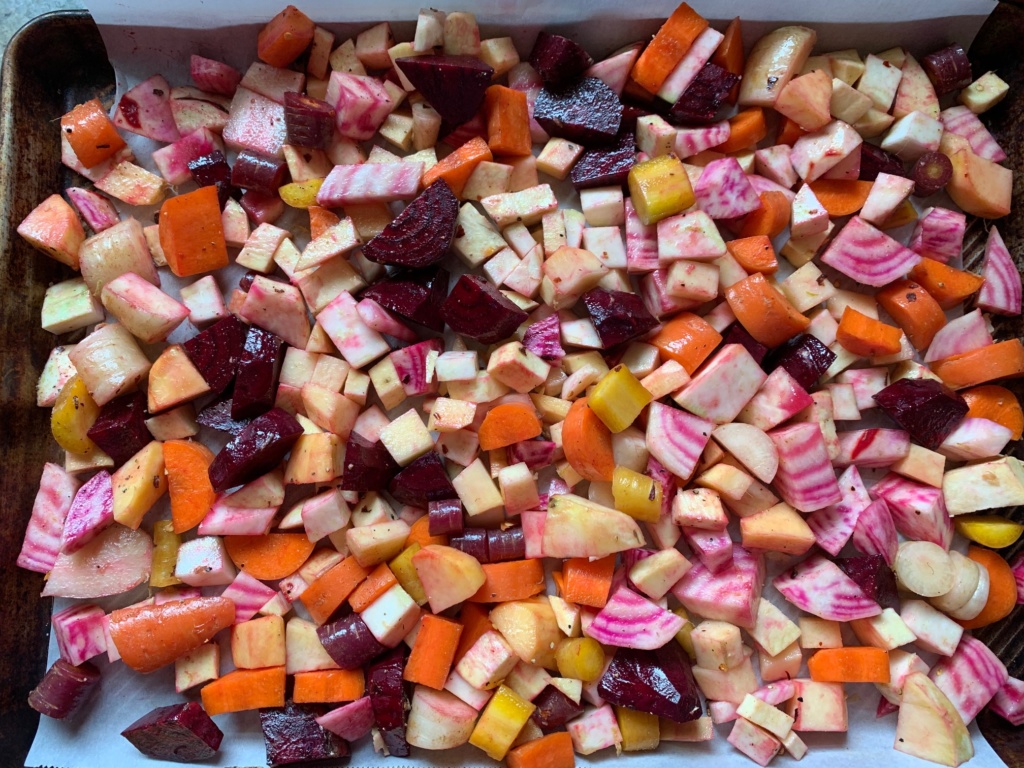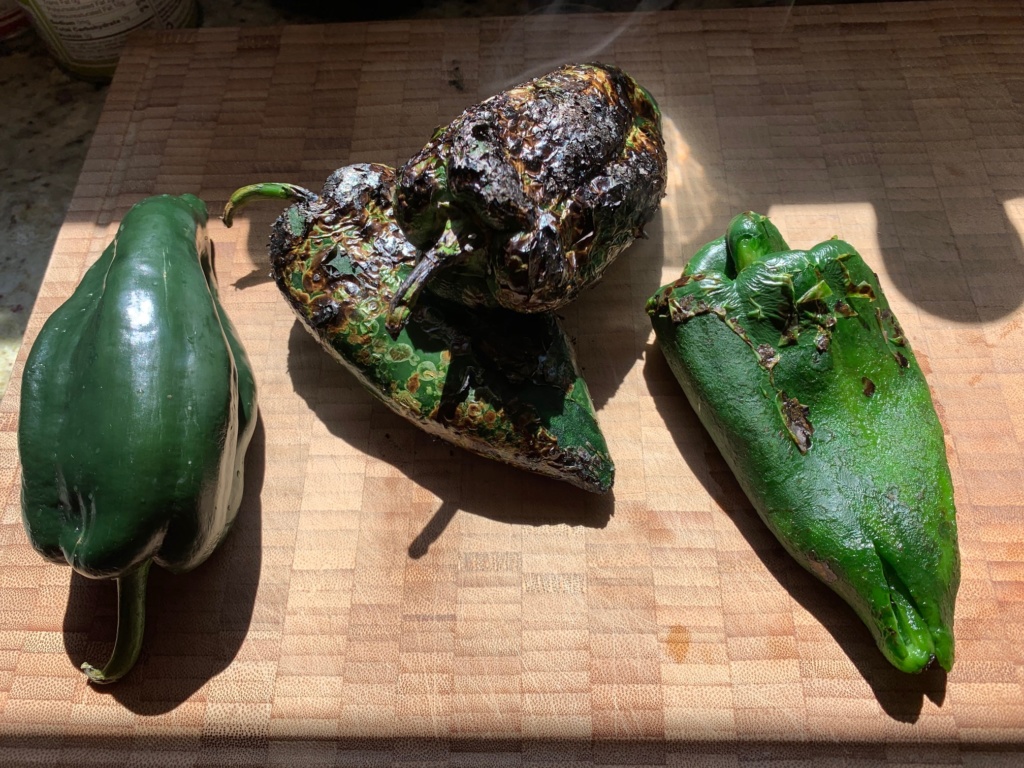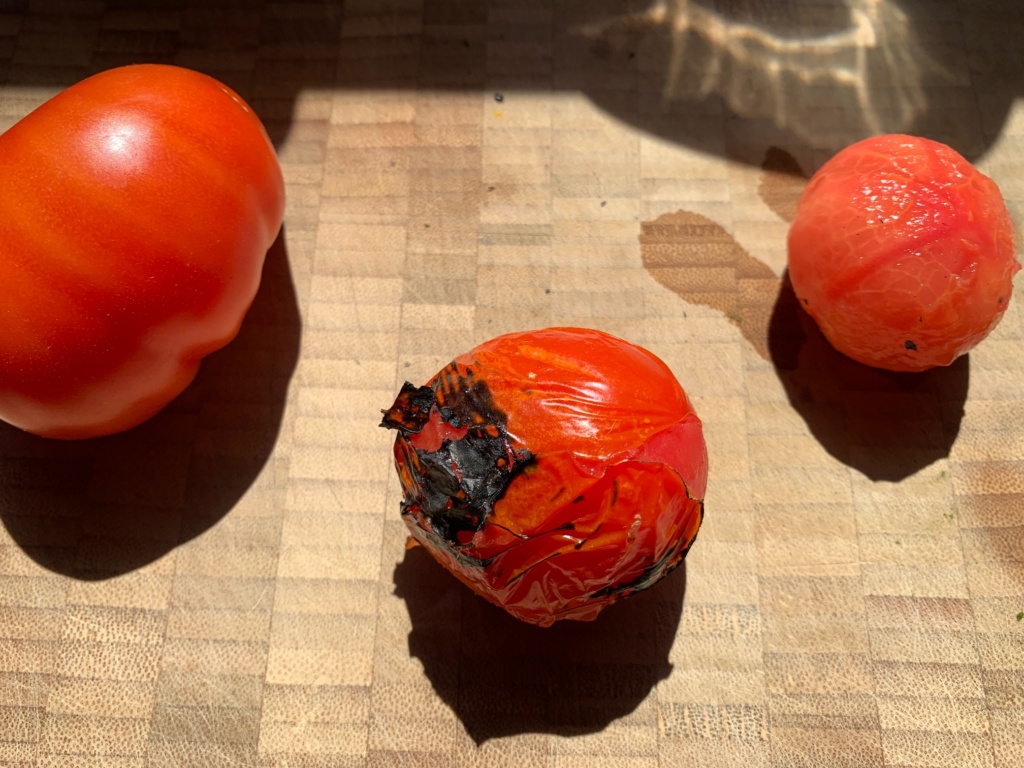
Wikipedia: Roasting is a cooking method that uses dry heat where hot air envelops the food, cooking it evenly on all sides with temperatures … from an open flame, oven, or other heat source.
Roasting is a dry high heat method of cooking that enhances meat and winter or starchy veggies (potatoes, sweet potatoes, beets, squash) flavor through caramelization and the Maillard Reaction. It concentrates the foods natural sugars and intensifies their flavor. In older times roasting was done over an open flame, and gas stoves allows for that flame, but these days it means broiling or high heat cooking in the oven.
Why Roast Veggies
The reason is to caramelize sugars in the veggies to make nice and tasty food with a depth of flavor unmatched by other cooking methods. The veggies can actually taste sweeter. The best veggies for roasting are roots, tubers and squashes.
Some veggies are roasted to remove its exterior skin such as peppers, bell peppers, and sometimes tomatoes.
Equipment

To roast Poblano Peppers on gas stove:
I cook directly on the flame from my gas stove, by placing a stainless steel rack over the flame and the peppers on the rack. I turn them with tongs with metal ends and a protective covering for my hands so I do not get burned. I roast them until completely blackened and place the fully chard ones into a paper bag to continue to steam as I cook the rest. Then once all are cooked, I put them in a colander and under a small trickle of running water remove the char outsides, split it open and remove the seeds and membrane and set aside to dry. The seeds, charred skin and membranes I put into the paper bag and dispose. However, remember you have pepper oil on your hands so wash carefully and do not touch your eyes! (OK yes I have learned the hard way and oh my goodness did it hurt!!)
To roast red peppers using broiler:
I start by turning on the broiler and cutting the peppers in half and removing seeds and membranes. Then place on a baking sheet with the skin side up and char them under the broiler. I roast them until completely blackened and place the fully chard ones into a paper bag to continue to sweat and steam. Then I put them in a colander and under a small trickle of running water remove the char outsides and set aside to dry. The seeds, charred skin and membranes I put into the paper bag and dispose. However, remember you have pepper oil on your hands so wash carefully and do not touch your eyes.

To roast veggies using oven:
Preheat oven to at least 425F. Decide which of your veggies cook similarly and place them together, so having 2 dark baking sheets would be handy. One for veggies that take longer, and one for veggies that cook quicker. I line the baking sheets with parchment paper to help with cleanup. Place the cut veggies in a bowl and mix with olive oil, and seasoning. (Honey, cheese and herbs that burn can wait till the food is closer to being done.) Coat all the veggies well then place on the paper-lined baking sheet without overcrowding. Bits of brown on the veggies are ok and indicate it might be done. With 2 baking sheets I put the longer cooking foods in first then at the last 15min or so I put in the quicker cooking baking sheet of food. This way they all come out at the same time. No resting is needed, remove from oven, mix with what you want to add (herbs, acid, salt, etc) and serve.
TheKitchn recommends, if cooking at 425F, these roasting times:
- Root vegetables (beets, potatoes, carrots): 30 to 45 minutes, depending on how small you cut them
- Winter squash (butternut squash, acorn squash): 20 to 60 minutes, depending on how small you cut them
- Crucifers (broccoli, cauliflower, Brussels sprouts): 15 to 25 minutes
- Soft vegetables (zucchini, summer squash, bell peppers): 10 to 20 minutes
- Thin vegetables (asparagus, green beans): 10 to 20 minutes
- Onions: 30 to 45 minutes, depending on how crispy you like them
- Tomatoes: 15 to 20 minutes